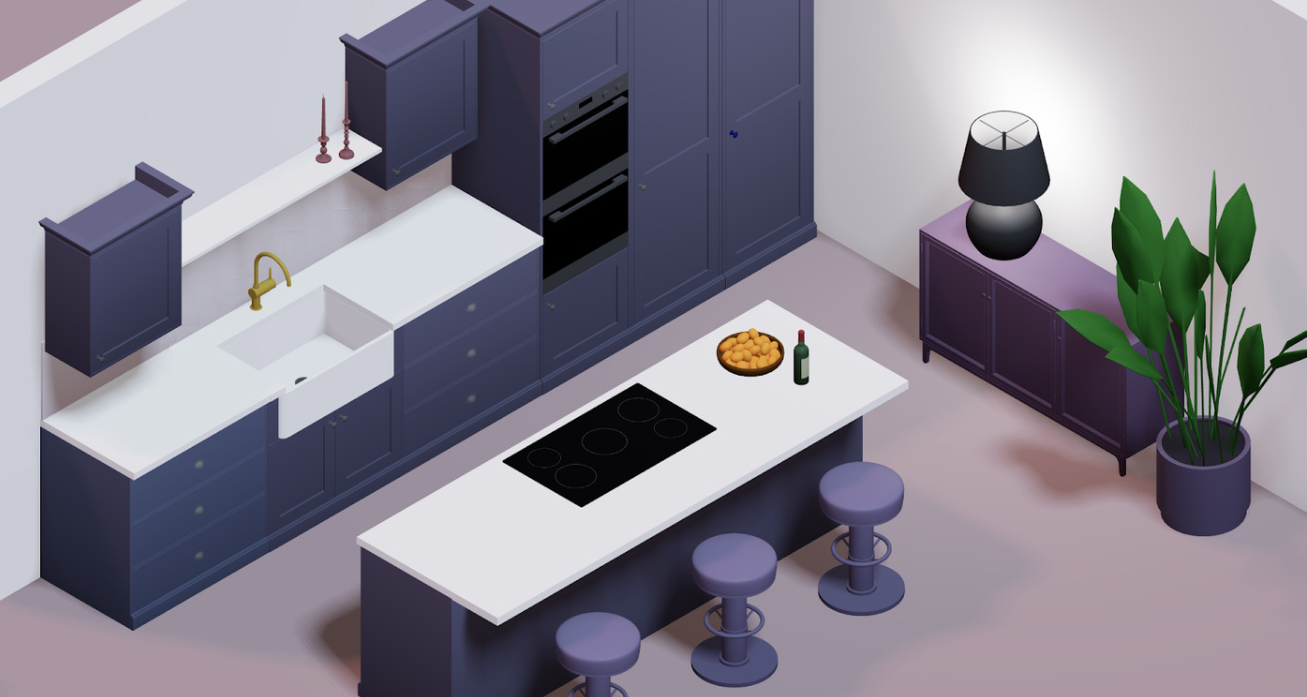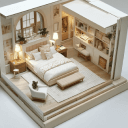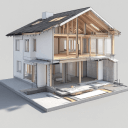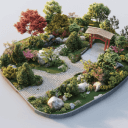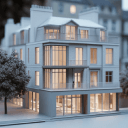Renovating a kitchen is an exciting yet complex endeavor. As a contractor, you know how many moving parts and decisions are involved – from demolishing old fixtures to installing new cabinetry, every step must be carefully planned. Miscommunication or visualization gaps can lead to costly changes mid-project.
That’s where modern 3D design technology comes in. Arcadium 3D is a prime example of how cutting-edge tools are transforming kitchen renovations by letting you and your clients see the end result before work even begins.
In this Contractor’s Corner guide, written from the perspective of a seasoned 3D kitchen designer, we’ll explore how leveraging Arcadium 3D can streamline every phase of a renovation. You’ll discover how anyone – from veteran builders to small remodelers – can make smooth transformations happen with Arcadium 3D, turning ideas into detailed plans and plans into reality.
Why 3D Design Is a Game-Changer for Kitchen Renovations
Traditional kitchen planning relied on 2D blueprints and a lot of trust. Clients had to visualize the new space from flat sketches, and contractors risked misunderstandings. 3D kitchen design software eliminates that guesswork by creating a lifelike model of the future kitchen.
Unlike a static floor plan, a 3D model lets you explore every angle – you can “walk through” the proposed kitchen, open virtual cabinets, and ensure the layout feels right. This enhanced visualization is crucial for aligning everyone’s expectations. It means fewer surprises during construction and a much happier client at project’s end.
Furthermore, designing in 3D helps spot problems before they start. For example, you might catch that a refrigerator door swings into a doorway or that an island is too close to a wall – issues that a flat sketch might not reveal. Addressing such layout conflicts digitally, before demolition, saves both time and money.
It’s far cheaper to tweak a virtual model than to move a plumbing line after installation. In short, 3D tools act like an insurance policy for your design – minimizing human error and ensuring everything fits perfectly the first time around.
Arcadium 3D’s
kitchen design software
takes these benefits to the next level. It operates entirely in your web browser (no bulky software installs needed), yet it’s powerful enough to produce professional-grade layouts and renderings. The platform was designed by interior design experts to be intuitive, so even if you’re not a tech wizard you can start dragging in walls, cabinets, and appliances within minutes.
All calculations of area, dimensions, and spacing are handled for you behind the scenes. In practice, that means a faster, more efficient design process – you’re freed up to focus on creativity and functionality instead of wrestling with complex CAD software.
Perhaps most importantly for contractors, a tool like Arcadium bridges the gap between design and build. It generates the clear documentation you and your subcontractors need to execute the plan accurately. With a click, you can export scaled floor plan PDFs with measurements for your crew, photorealistic images for client mood boards, and even a full itemized list of materials and fixtures.
Arcadium’s built-in item list will output every cabinet, appliance, and finish in the design – complete with quantities and dimensions – so you can order supplies confidently that everything will fit as intended. This kind of seamless handoff from vision to implementation is a game-changer. It means fewer last-minute scrambles for missing parts and virtually no “oops, we measured that wrong” moments during the build.
Check Out Our Tool
Step-by-Step: Using Arcadium 3D in Each Renovation Phase
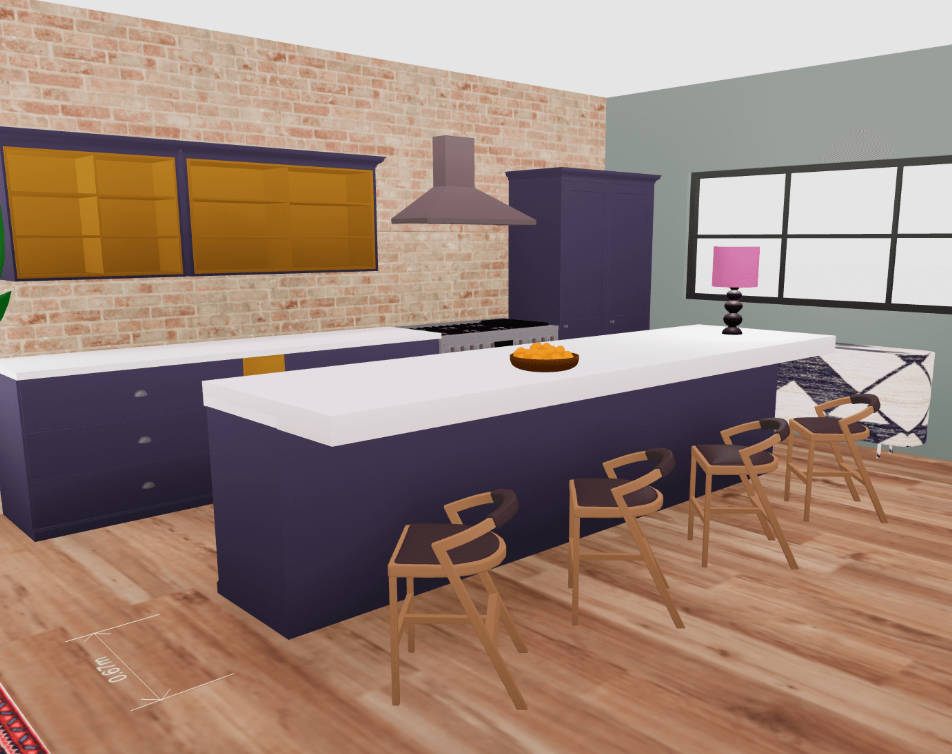
Every renovation goes through stages – planning, tear-out, build, and finish – and Arcadium 3D can add value at each one. For example, let’s consider how a contractor can leverage a modern kitchen design software like Arcadium 3D throughout a project to keep things efficient and on-track. Below is a phase-by-phase look at using Arcadium 3D during a kitchen remodel:
1. Client Briefing & Vision Alignment:
The process kicks off with understanding the client’s needs and ideas. Instead of scribbling notes and later producing a flat sketch, you can fire up Arcadium 3D right in the client briefing meeting. Start by mapping out the room’s basic shape in the software – drawing in the walls, windows, and doors to mirror the actual kitchen dimensions.
Because Arcadium is so quick to use, you can even mock up rough layouts on the spot. For instance, if the client wants an island, drop in an island module from the library and show roughly where it could go. This live visualization helps ensure you and your client are envisioning the same outcome from day one. Clients often light up when they see a digital representation of their future kitchen emerging in front of them – it builds confidence and excitement.
As a contractor, you’re also gathering crucial info: noting where the plumbing, gas lines, and electrical outlets are in the current space and considering how the 3D layout will accommodate or alter them. By the end of the briefing, you can have a basic 3D floor plan that captures the client’s wish list and the space’s constraints. This becomes the foundation for the detailed design to come.
2. Design Development & Client Approval:
After the initial meeting, it’s time to refine that rough model into a polished design. Back at your office, you’ll use Arcadium 3D to flesh out all the details. This is where you fine-tune the layout for function and code requirements, using Arcadium’s tools to ensure proper clearances and ergonomics.
For example, you’ll make sure to implement the classic “kitchen work triangle” – positioning the sink, fridge, and stove at optimal distances – which Arcadium makes easy to visualize in 3D. You’ll also add in exact cabinet configurations, appliance models, and any specific materials the client requested. Arcadium’s parametric components really shine here, letting you adjust cabinet sizes or countertop lengths to fit the space perfectly (no guesswork – you get exact dimensions for that custom pantry cabinet or the new island).
During this phase you can also experiment freely: try multiple paint colors or fixture styles and instantly show how they change the kitchen’s look. Because everything is virtual, you can iterate rapidly without wasting material. Once you’ve honed a design that balances aesthetics and functionality – making the most of every square inch while achieving the look the client wants – you’ll present it to the client for approval.
Instead of a confusing blueprint, you send them an Arcadium 3D link to the model so they can take a virtual tour at their convenience. It’s not uncommon for the client to suggest minor tweaks at this stage (“What if the oven was on the other wall?”). With 3D, accommodating these changes is painless. You update the model and within moments have a new version ready to view, rather than redrawing plans from scratch.
When the client finally says “Yes, that’s exactly what I want,” both of you have a crystal-clear understanding of the goal. This locks in the design before any physical work begins, giving you a solid game plan to follow.
3. Pre-Construction & Demolition Planning:
With an approved 3D design in hand, you’re ready to prep for construction. First up is demolition of the old kitchen (if it’s a remodel of an existing space). Arcadium 3D serves as your visual roadmap here. By referring to the model, you can create a precise demo plan: marking which walls or fixtures are coming out and which structural elements stay.
For example, if the 3D plan shows a wall being removed to open up the kitchen, you’ll confirm if it’s load-bearing and plan the needed supports, informed by what the final design requires. You can also use the software’s measurements to determine exact heights and positions for any new openings (like that passthrough window or widened doorway).
Many contractors find that having the detailed model reduces uncertainty at this stage – there’s less “tear things out and see what we’ve got,” and more strategic demolition aligned with the end vision. This is also the phase to coordinate with trades like plumbers and electricians. Because Arcadium lets you visualize where every appliance and fixture will sit, you can walk your subcontractors through the plan easily.
Show the plumber the 3D view of the sink area and dishwasher placement so they know where to run new pipes; show the electrician the exact layout of the lighting plan (Arcadium even accounts for lighting in the model) so they know where to wire for under-cabinet lights or pendants. The clarity of a 3D model ensures each specialist understands the end goal, reducing miscommunications.
Armed with Arcadium’s automatically generated item list, you’ll also order all the necessary cabinets, countertops, and finishes ahead of time. Since the software confirms the fit and dimensions, you can feel confident everything you order will suit the design – no more ordering a cabinet that turns out to be the wrong size.
By the time you start actual demolition, you’ve essentially “built” the project virtually, so you know exactly what to remove and what to prepare for the new installation. This level of preparation keeps the construction phase smooth and on schedule.
Top-down view of a kitchen layout in Arcadium 3D’s planning interface. During the pre-construction phase, contractors can use such 2D/3D plans to map out demolition – identifying which walls or fixtures to remove – and to guide plumbers and electricians on where new connections should be. The software’s precise measurements ensure that the build team works with accurate information, preventing errors on site.
4. Installation & Construction:
Now comes the heart of the project – bringing the approved design to life. As construction begins, Arcadium 3D remains a trusty reference. Think of the 3D model as the ultimate assembly manual for the new kitchen. Framing and layout: Carpenters can refer to the model for the exact placement of new structural elements or cabinetry framing.
For instance, the model will show that the new island is 8 feet from the back wall and aligned with the center of a window – details your team can replicate on the floor with confidence. Because you have exported scaled floor plans from Arcadium, you might print those out for the crew to follow, ensuring everyone is literally on the same page.
Cabinet and appliance placement: Using Arcadium’s dimensions, you’ll install cabinets at the correct heights and spacings that were determined in the design. If the design called for a 36-inch wide stove with two 18-inch spice pull-outs flanking it, you’ve got that layout precisely in the plan and can double-check as you go.
Tradespeople appreciate this clarity – it reduces constant questions like “Exactly where should this outlet go?” because the plan already shows that the outlet for the fridge needs to be, say, 12 inches off the floor, directly behind the left side of the fridge unit. Throughout the build, you can also use a laptop or tablet on site to rotate the 3D model and show any worker what the finished area they are working on is supposed to look like.
This is immensely useful if, for example, a tile installer wants to confirm the pattern or alignment of a backsplash: pulling up the model’s view of the backsplash can guide their work. As components get installed, you and the client will start to see the virtual design turning into reality piece by piece – a rewarding and reassuring process. And since everything was planned digitally first, installation tends to be faster and with fewer hiccups.
Your workflow becomes more about assembly than improvisation. If something unexpected does arise (say a hidden pipe in a wall that forces a slight layout change), you can go back to Arcadium 3D, adjust the model to resolve the issue (maybe a cabinet gets slightly resized or a layout tweaked), and immediately visualize the impact. This flexibility mid-project means you can problem-solve quickly and keep the project on track, all while keeping the client in the loop with updated visuals if needed.
5. Final Walkthrough & Client Satisfaction:
The renovation is complete – now it’s time to step back and admire the new kitchen alongside your client. This is where all the upfront design work in Arcadium truly pays off. During the final walkthrough, there’s a wow factor as the client realizes the space looks exactly as promised in the 3D designs.
There are no unpleasant surprises – the colors, layout, and overall feel are what they already approved virtually. This alignment between expectations and reality is one of the biggest contributors to client satisfaction. As a contractor, you also benefit: a happy client means positive reviews and potential referrals, and you can wrap up the project without a long punch list of fixes.
In fact, because you planned so thoroughly, any minor adjustments needed (perhaps adjusting a cabinet door or a slight paint touch-up) are usually trivial. You might even bring your laptop to the reveal and do a side-by-side comparison: show the Arcadium 3D model on one side and gaze at the real kitchen, marveling at how closely the outcome matches the plan. This instills trust – the client sees that you delivered exactly what was agreed upon.
Additionally, if the client thinks of future enhancements (like adding pendant lights or swapping hardware), you can quickly update the Arcadium model to preview those ideas even after the project, helping them make new decisions with confidence. All in all, by using Arcadium 3D throughout the project, you’ve delivered a smoother renovation experience – one that was on time, on budget, and devoid of the common missteps that plague less-planned projects.
Check Out Our Tool
Globally Applicable, Professionally Effective
One of the great advantages of adopting Arcadium 3D is that its benefits apply to any kitchen renovation, anywhere in the world. Whether you’re a contractor designing a compact urban apartment kitchen or a spacious rural farmhouse layout, the software helps optimize the space for functionality and flow.
The principles of clear visualization and precise planning are universal – homeowners everywhere want to feel confident about their renovation, and every contractor wants to avoid costly overruns. By using a 3D design tool, cultural or regional differences in style are easy to accommodate too.
Arcadium’s extensive library means you can cater to diverse tastes, from sleek European cabinets to traditional Asian kitchen elements, ensuring the tool is useful in any market. Because it’s cloud-based, even global collaboration is simple.
A contractor in one country can share a model with a client or specialist in another, bridging distance with a common virtual “language” of the 3D plan. In essence, Arcadium 3D provides a systematic approach to kitchen remodeling that transcends locale: plan thoroughly, communicate visually, and execute with confidence.
Conclusion: Embrace the 3D Transformation
The renovation landscape is changing, and contractors who embrace 3D design technology are leading the charge. Using Arcadium 3D for kitchen remodels isn’t just an optional extra – it’s rapidly becoming a best practice for delivering projects efficiently and delighting clients.
By persuasively visualizing the dream kitchen up front and keeping the plan accessible through every phase, you dramatically reduce the miscommunications and mistakes that can derail a renovation. You also elevate your professionalism; homeowners will see you not just as a builder, but as a visionary who uses cutting-edge tools to bring their dreams to life.
In my own experience, adopting a 3D kitchen design tool felt like unlocking a secret weapon – suddenly, even the most complex transformations became easier to manage. Contractors around the globe are finding the same: when you can walk a client through their future kitchen before a single hammer swing, the whole renovation process becomes smoother and more predictable. If you haven’t yet tried Arcadium 3D, consider this an invitation. It’s free to start and easy to master, so you can experiment with your next project risk-free.
Check Out Our Tool


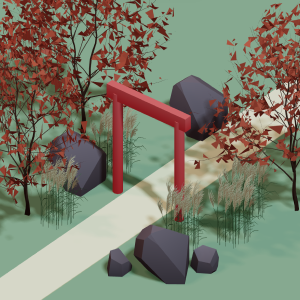 All training, tips and articles
All training, tips and articles
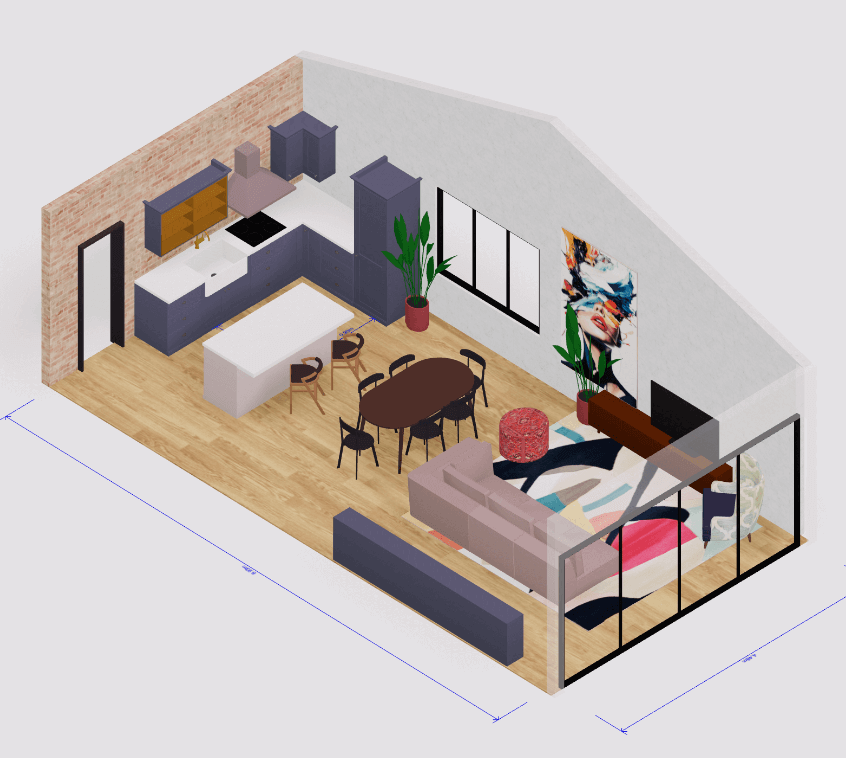 3D house design tool
3D house design tool
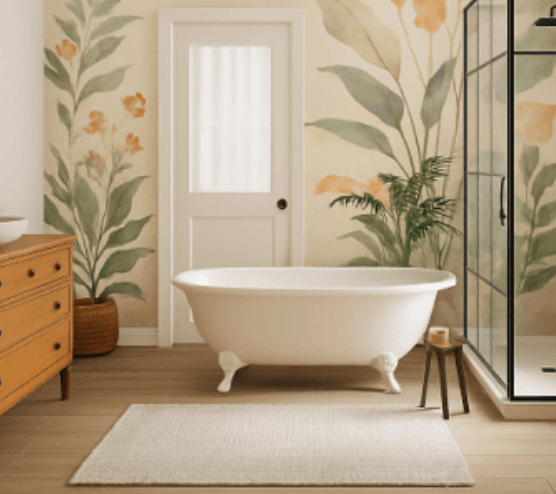
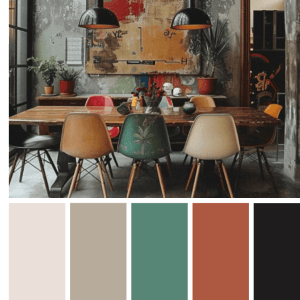 Color palette generator
Color palette generator
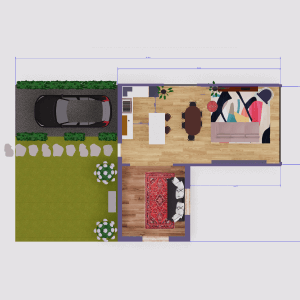 Floor plan creator
Floor plan creator
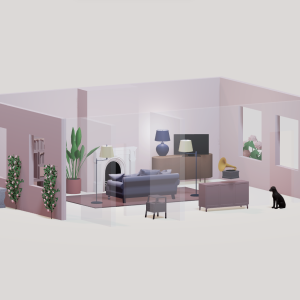 Interior design app
Interior design app
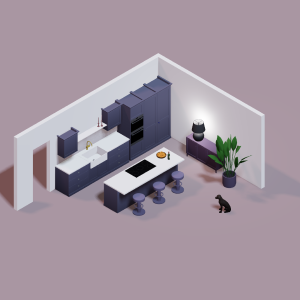 Kitchen design tool
Kitchen design tool
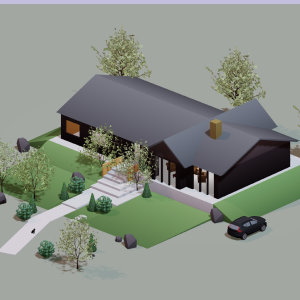 House design software
House design software
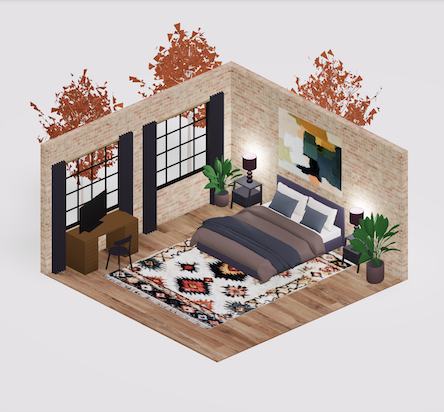 Room designer
Room designer
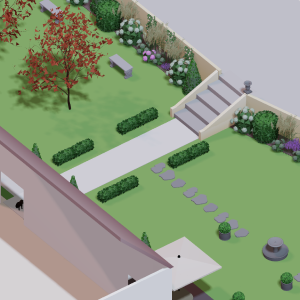 Landscape design software
Landscape design software
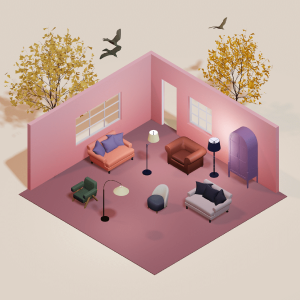 Bedroom design
Bedroom design
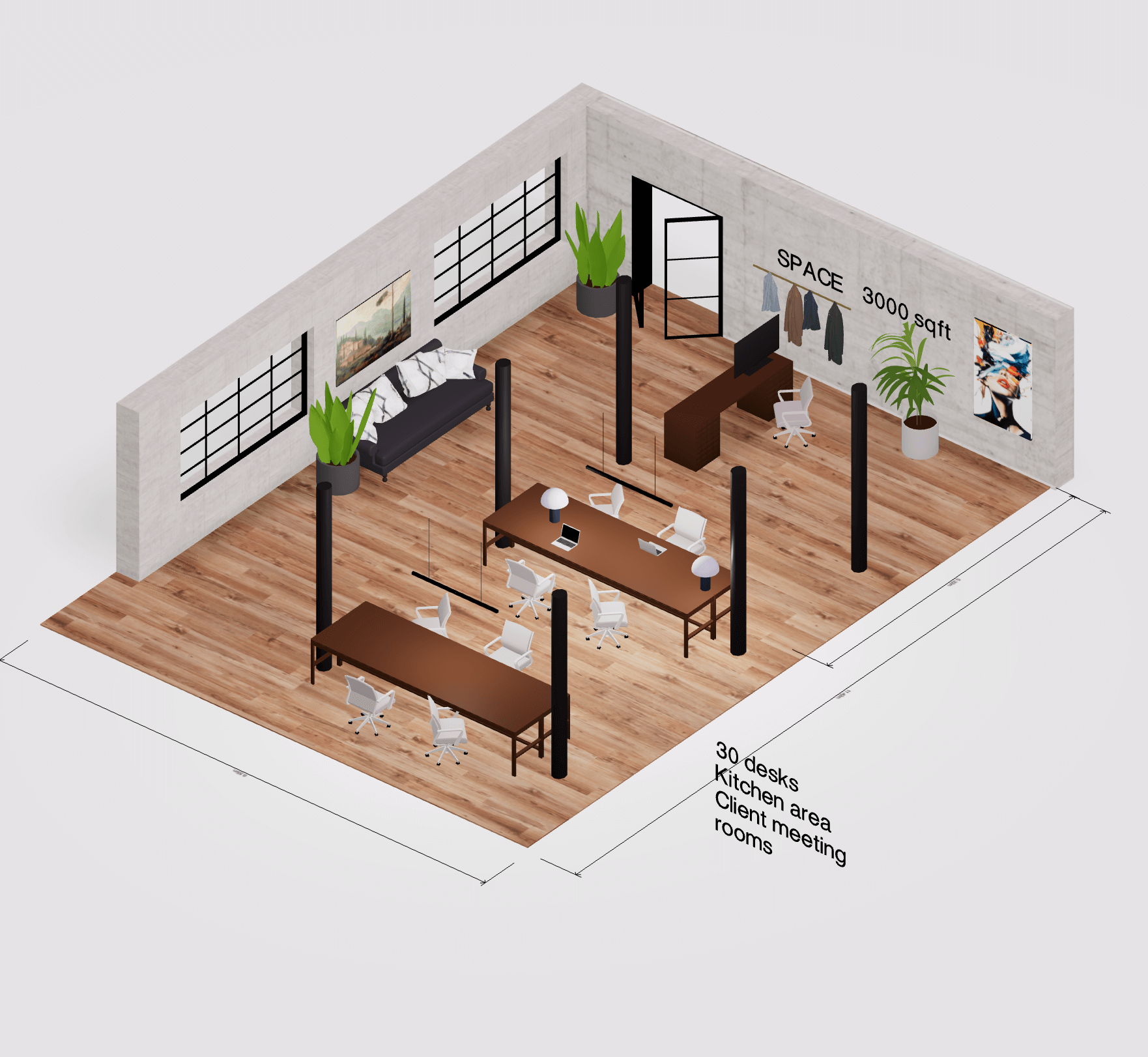 Office floor plan creator
Office floor plan creator
